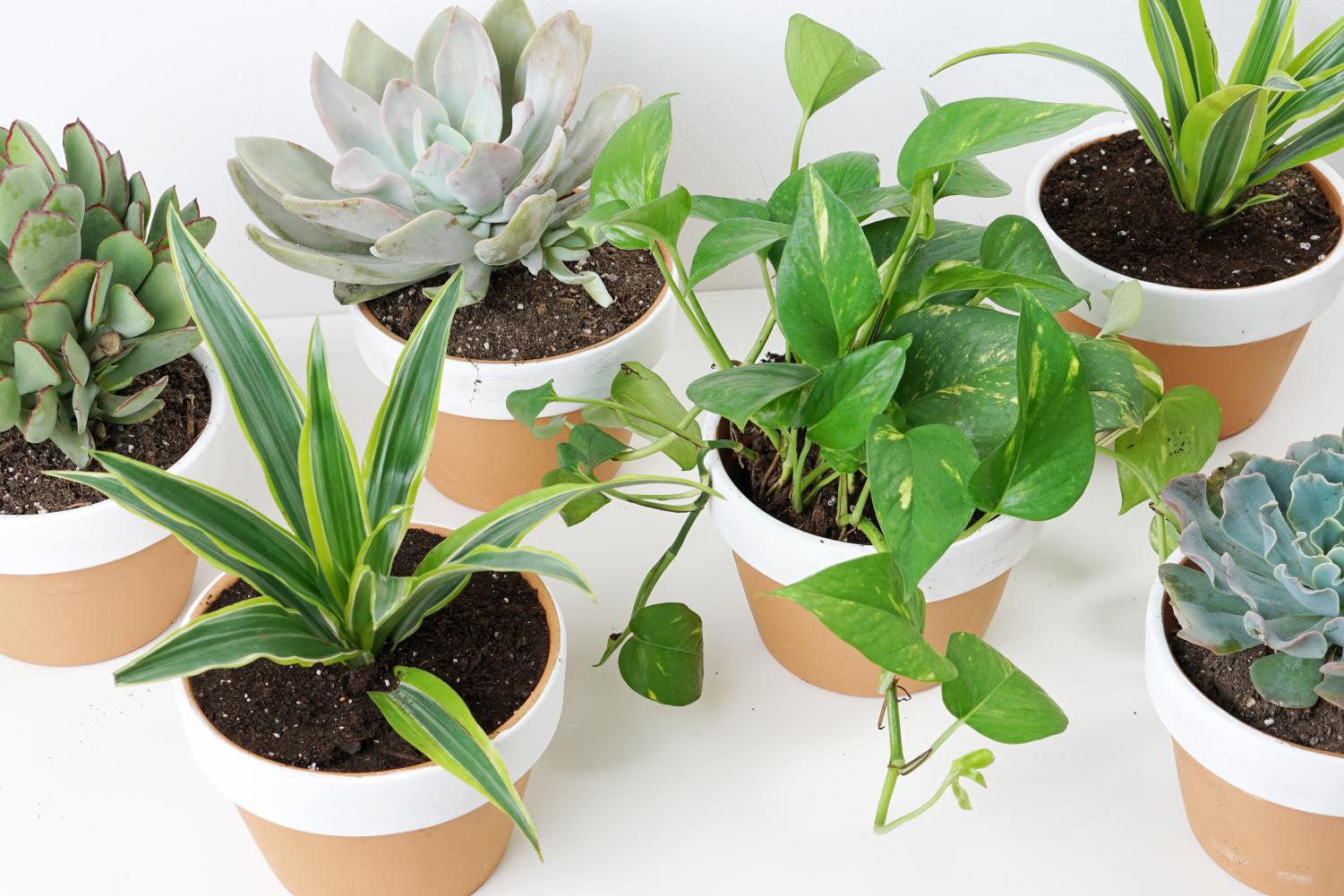Spring—the season of renewed life and fresh blooms—is finally here. While the current weather might still be too chilly to begin outdoor gardening, The Sill reports that growing houseplants indoors is optimal during this time of year since more sunshine and longer days are to be expected. To those interested in bringing a piece of nature indoors, many find that taking care of houseplants requires little skill and background experience.
“[The most difficult part about growing houseplants is] remembering that plants need attention just like pets do, [but] it’s a lot easier than taking care of a pet,” junior Graceyn Jones said. “It’s [also] a good way to purify the air.”
Like pets, plants are living organisms that require nourishment, a fact often overlooked.
Others find growing houseplants appealing because of the nurturing aspect of houseplants and being able to see physical results.
“I love seeing the new growth [of my plants] and how giving them different fertilizers or putting [them] in a new location, with more or less sun, can affect the plant as a whole,” senior Megan Kim said.
In addition to being a great piece of decor, Healthline reports that cultivating indoor plants can also provide health benefits such as reducing stress levels and boost emotional well-being. Here are three tips on how to successfully care for houseplants and three easy plants for beginners.
Tip #1: Get to know your plants
Before bringing the first plant home, have a basic understanding of the plant’s specific needs. Some plants, like the ZZ plant, need relatively little attention while plants like the fiddle leaf fig tree can be extremely sensitive to environmental factors. In addition, many plants, such as lilies and ivy, can be toxic to pets if eaten, so it is important to be aware of how the plants can affect those nearby.
“[Caretaking habits] depend on the plant, so making sure to research the specific plant you have is very important or else you could end up killing it,” Kim said.
Although the location, amount of light, watering requirements and maintenance tasks like repotting or soil care generally differ for each species, individual plants also have their own unique preferences and needs. When caring for plants, it will be easier to deduce these preferences over time, as each plant will respond to certain conditions; for example, tropical plants like the Chinese evergreen prefer being misted rather than have water poured on them.
Tip #2: Start out small
Even if a plant has an appealing appearance, the most important things to keep in mind when choosing a plant are the time and attention it requires, and the suitability of the home environment. For example, while Boston ferns and bonsais might be aesthetically pleasing to the eye, they are demanding to take care of since they are delicate plants. Boston ferns need warm temperatures, high humidity levels and moderate amounts of sunlight in order to survive. Bonsais must be grown in a specific soil cultivated for bonsais.
“Make sure you have someone take care of your plants if you’ll be unavailable; don’t get a plant that requires a lot of upkeep if you won’t be able to follow through with the care needed,” Jones said. “I think a lot of beginners forget to take care of their plants and become discouraged when they die. Getting plants that are very low maintenance, like succulents, should help with this problem.”
Tip #3: Watch out for over-watering
Watering a plant might be the most stressful step for new plant-owners. New plant parents should carefully read up on the amount of water to use for each plant, how often to water the plant and when to water the plant.
“Overwatering is definitely the biggest and easiest mistake to make,” Kim said. “I remember [when I first started], I was so excited [that] I would water them too frequently, but after some time, I figured out how to tell when they actually need water and when I should leave them be.”
In general, remember to let the plants dry out completely before watering them again. The drying period varies for each plant and is based on the plant’s natural environment and size. For example, desert plants like cacti and succulents can be soaked, but weeks and even months may pass before the soil is completely dry to be watered again. Even with two plants of the same species, the one in the smaller pot with less soil will need to be watered more often than the larger of the two because the soil will dry out faster.
Additionally, make sure to frequently check the conditions of the plant’s soil. While some plants may be more dramatic and show clear signs of dehydration, like droopy leaves, other plants are more subtle. Use two fingers to see if the top two inches of soil are dry—if so, that’s a sign the plant needs watering.
Three recommended houseplants for new plant parents
Being extremely low-maintenance, pothos, a trailing plant that can grow up to eight feet long, is one of the most popular options for beginners.
“I started with pothos [because] it’s super easy to take care of and doesn’t need a ton of sunlight, so you can keep it anywhere,” Jones said.
Usually adorning sword-shaped leaves and vertical stripes, snake plants come in various forms and can be a good addition to an indoor garden. It can tolerate low light and little water.
“Snake plants are super easy to take care of, and really, the only thing that will kill it is overwatering,” Kim said.
The aloe vera plant is another low-stress option, as it’s difficult to kill and its gel can be used as a healing ointment. It also doesn’t need a lot of light and consistent watering.
“[Aloe is a] great plant to start with because it’s always useful to have on hand and doesn’t need a lot of water or maintenance at all,” Jones said.
Many find indoor gardening to be very rewarding, even if it takes some time to see results.
“It can be frustrating because these things take time, but if you are dedicated and really care about the plants, it’s a great hobby,” Kim said. “Seeing [your plants] grow is so rewarding because you know it’s a result of all the time you put into it.”

